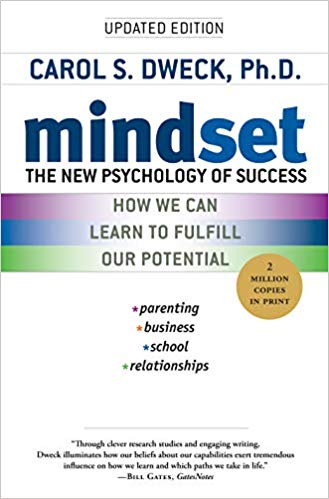

This article is an excerpt from the Shortform summary of "Mindset" by Carol Dweck. Shortform has the world's best summaries of books you should be reading.
Like this article? Sign up for a free trial here .
You’ve heard about Carol Dweck’s growth mindset and fixed mindset. What’s your mindset? People can have a mix of the two mindsets, or they can apply a fixed mindset in certain situations and a growth mindset in others. You may have fixed beliefs about your intelligence but a growth mindset (believing you can improve) when it comes to other qualities. However, one mindset or the other — fixed or growth — tends to dominate your life. If you have a fixed mindset, how do you change your mindset to be more successful?
We’ll cover how to change your mindset from a fixed mindset to a growth mindset and explore six scenarios that give you the opportunity to practice how you’d approach a situation with your new growth mindset.
How to Change Your Mindset
To review, you have a fixed mindset if you believe your intelligence or abilities are innate and can’t be changed (I’m just not good at math); that you’re a certain kind of person, like it or not. In contrast, you have a growth mindset if you believe you can get smarter by learning and changing fundamental things about yourself, such as becoming more caring or better in social situations.
Change Your Mindset: From Fixed to Growth
How Your Mind Works
Your mind is constantly monitoring and interpreting what’s happening around you. Your mindset guides how you interpret things.
A fixed mindset sets up a mental monologue focused on judging — you feel judged and you judge others. For instance, you might think, “This means I’m a failure,” “What a bunch of losers,” “I’ll never be good at handling money.” But you can change your mindset.
Growth-oriented people don’t constantly judge themselves and others this way. Like people with fixed mindsets, they keep a running mental account of events and feelings, but their interpretations of what’s going on focus on learning and action. They think, “This situation is painful, but what can I learn to avoid repeating it?” and “How can I improve?”
This chapter is about changing your mindset from a judging monologue to a growth-oriented one — a mindset based on a belief in change and development. Often, just learning about the two mindsets and how they affect you can prompt change. However, completely changing your mindset is hard. The fixed mindset hangs around, competing with the growth-oriented ways of thinking that you’re trying to adopt.
Your fixed mindset beliefs about being smart, ambitious, superior, and super-competent may be your source of self-esteem, which makes them difficult to give up for more challenging ideas about developing yourself through effort, taking on challenges, making mistakes, and learning through constructive criticism.
You may temporarily feel that you’re losing your sense of who you are. But the growth mindset frees you from constantly judging yourself so you can be authentic and explore your full potential.
People can have a mix of the two mindsets, or they can apply a fixed mindset in certain situations and a growth mindset in others.
It’s important to do some self-analysis and discover what puts you into a fixed mindset — it could be an event or situation, such as a disappointment, setback, or fear that makes you believe you’re incapable or someone else is incapable of something. Everyone has a fixed mindset persona that reminds us of past failures and problems. The key to changing your mindset is learning to keep that persona from preventing us or our children from growing.
Changing Your Words to Change Your Mindset
Changing your thinking patterns to change your mindset takes practice. To help you learn new approaches to problems, here’s a series of scenarios in which potential fixed-mindset responses are compared with growth-oriented responses.
Scenario 1: Graduate School Rejection
Imagine you applied to just one graduate school — the one you preferred above all others — and you were confident you’d be accepted. But you were rejected. In a fixed mindset, you start by rationalizing: The process was extremely competitive; they probably had more top applicants than they could accept. This evolves into: I’m mediocre; I’m not worthy of being accepted.
Choosing growth: In a growth mindset, focus on your goal of graduate school study and how you can remain on track. What concrete steps can you take, such as researching and applying to other schools? What can you learn from the rejection about improving your application? In the real-life version of this scenario, the applicant called the school that rejected her to get information on how to improve. The admissions officer was impressed and decided to accept her application after all.
Tip: People often come up with plans in response to a problem but don’t follow through. You vow to do it tomorrow, but that rarely happens. To succeed, you need to make a concrete, growth-oriented plan with specific implementation steps for when you’ll do what — for instance, tomorrow during my break, I’ll get coffee, close my office door, and call X, following this script. Visualize yourself going through the steps. Then take action, regardless of how you feel. This is important to change your mindset.
Scenario 2: Number One Draft Pick
Imagine you’re a promising quarterback and are the top draft pick of the Philadelphia Eagles. While this is what you’ve dreamed of, you’re seized with performance anxiety. What if you can’t live up to everyone’s expectations — yours, the team’s, the media’s, your friends’ and colleagues’? You’re so anxious that you lose focus and perform poorly. In a fixed mindset, you feel like a failure. You keep to yourself, avoiding teammates and the media. You disappear after each game.
Choosing growth: Remind yourself that playing in the pros is a totally new experience requiring a big adjustment. You have a lot to learn, which you couldn’t be expected to know at the outset. Ask yourself how you can find out what you need to know. You spend time with veteran players, asking questions and reviewing tapes. You talk about your adjustment process and they empathize and give you advice for adjusting mentally and physically. You begin feeling like you’re part of an organization committed to your development.
Scenario 3: The Entry-Level Job
Imagine starting a new job at the bottom rung of the ladder. You feel the work is demeaning but your boss thinks you have a bad attitude and passes over you for promotion or additional responsibility. Your fixed-minded reaction is that she’s threatened by you. Your talents are obvious and should be rewarded, and you’re entitled to what you want. It’s the organization that needs to change, not you.
Choosing growth: Instead of fixating on your superiority, you look for cues on how the company works and how others get ahead. You realize that many CEOs had to start at the bottom too. You notice that effort counts, so you begin working harder. But just working hard doesn’t guarantee success, so you also focus on learning, building relationships, and helping colleagues grow.
Scenario 4: Things Fall Apart
You think everything is perfect: You have a great career, marriage, and kids. But you’re missing some signs of trouble in your marriage. Your partner wants more communication and intimacy, but you’re in denial that anything needs to change. As a result, your partner begins pulling away from you emotionally. When you finally wake up to what’s going on, your fixed-minded reaction is to feel worthless because the person closest to you doesn’t want you anymore.
Choosing growth: You start rethinking your marriage and yourself. Your marriage didn’t suddenly fail — it was evolving until you stopped nurturing it. You realize that you took your partner’s request for a deeper relationship as criticism. You can learn to be less judgmental and develop relationship skills. If you can’t save your current relationship, you can move on without feeling bitter and build better future relationships.
Scenario 5: A Fixed-Mindset Child
Your daughter is at the top of her class and studying the flute. You’re proud of her and sure that she’ll excel. But she begins feeling ill with an upset stomach before school each day and is diagnosed with an ulcer. A counselor tells you she is feeling too pressured and you need to ease up on her and make sure she gets more sleep.
Choosing growth: You need to work out a concrete plan you can all follow. You think about how you can help her develop a growth mindset so she can ease up and enjoy life. You put the flute lessons on hold. You allow her to practice when she wants to, but only for fun. She gets a tutor to teach her how to study to learn. And everyone talks to her about progress and learning, not grades.
Scenario 6: Willpower Isn’t Enough
When your family violates one of your rules (take out the garbage each week), you feel personally betrayed and start criticizing. You progress to insults, then rage. Your targets flee. Your fixed-minded reaction is to feel at first that you were right to be angry. Then you realize you went too far and feel guilty. You pledge not to slip again. But you don’t create any strategies, and it happens again.
Choosing growth: Your first step is to explore why you get so worked up. It seems to happen when you feel disrespected, as though your wishes are trivial. The next time you feel slighted, you plan to calmly tell your family how you feel. You plan to leave the room when you feel you’re losing control, write down your thoughts, and reinterpret what’s happening. Maybe you can ease up on some of your rules, and stop using them as a test for others’ respect for you.
Tip: Willpower isn’t enough to sustain a major change and change your mindset. You need to develop workable strategies and practice them. For instance, to make a diet work, you can plan things like keeping desserts out of the house. You can think in advance what to order at a restaurant. You can develop an exercise plan. The inevitable setbacks are an opportunity to learn.
4 Steps: Changing Your Mindset Is a Journey
Changing your mindset and achieving a growth mindset is a journey. You don’t get there all at once — you have to take one step at a time. Here are the beginning steps to change your mindset.
1) Accept having a fixed mindset. Even when you’re on a path to growth, you have lingering fixed-mindset beliefs. In fact, everyone has a mix of fixed and growth-oriented beliefs. You can accept this reality without accepting the negatives a fixed mindset causes.
2) Learn what prompts your fixed mindset. When is your fixed-mindset persona likely to materialize? Possibilities include: when you take on a challenge, when you face obstacles or fail at something, or when a friend or colleague achieves something you envy.
3) Name your fixed-mindset persona. This can help you identify when you’re acting with a fixed mindset and remind you that’s not who you want to be. Pay attention to what happens with this persona is triggered.
4) Confront your fixed mindset: When your fixed mindset materializes, have an imaginary conversation with it. For instance, if you’re about to take on a new challenge, your fixed-mindset way of thinking may prompt you to worry about failure and want to quit. However, you can be ready to counter these beliefs when they come up by reminding yourself that risk is inherent in growth and failures are opportunities to learn.
Since everyone has a fixed-mindset persona, we should have empathy for others who struggle with the limitations of perfectionism, a sense of failure, or a need to always feel superior. Everyone is on a journey. You can learn to recognize and replace fixed-mindset thinking with a belief in your ability to grow and in others’ ability to change their mindsets, too.
Summary of Mindsets
Here’s a summary of the two mindsets. Review it daily to remind yourself of the differences and stay in a growth mindset. Ask yourself what opportunities you have today for growth and how you’ll embrace them.
Fixed-Mindset
- Core belief: Ability is fixed.
- What happens:
- You feel a need to constantly prove yourself.
- You avoid challenges.
- You get defensive or give up.
- You see effort as pointless.
- You reject critical feedback.
- You feel threatened by others’ success.
- Result: You can’t learn or develop to your full potential.
Growth Mindset
- Core belief: Everyone can learn and grow.
- What happens:
- You focus on learning and growing.
- You welcome challenges.
- You persist in the face of obstacles.
- You see effort as a key to success.
- You welcome critical feedback.
- You learn from others’ success.
- Result: You continue to reach new levels of achievement.
It takes hard work, but it’s possible to change your mindset.
———End of Preview———

Like what you just read? Read the rest of the world's best summary of "Mindset" at Shortform . Learn the book's critical concepts in 20 minutes or less .
Here's what you'll find in our full Mindset summary :
- The difference between a growth and a fixed mindset
- How a fixed mindset keeps you back throughout your life: education, relationships, and career
- The 7 key ways to build a growth mindset for yourself






